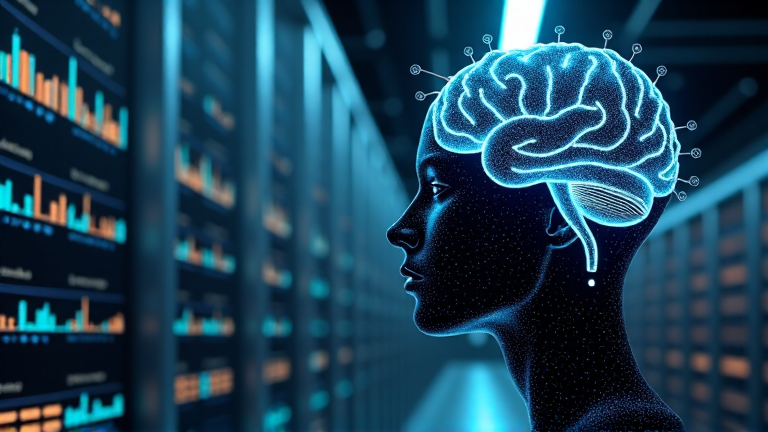
Revolutionizing AI: The Emergence of OpenAI o3-mini
Advancements in artificial intelligence continue to push boundaries, and the OpenAI o3-mini is at the forefront, raising both intrigue and scrutiny. With the potential to dynamically adapt to demanding tasks and autonomously manage complex processes, this model marks an essential development in AI technology. Its rapid progress not only forecasts a new era of efficiency and accessibility but also raises questions of ethics and sustainability.
Meet OpenAI o3-mini
The o3-mini High model is making waves as a cutting-edge autonomous AI system, marking a transformative leap forward. Unlike earlier forms of AI, this model is capable of coding, machine learning deployment, and process improvements autonomously, highlighting significant enhancements from previous iterations.
Quick Overview
- The o3-mini represents a breakthrough in autonomous AI, sparking debates over its ethics and accessibility.
- It successfully automated the coding of a Python-based Snake game, demonstrating proficiency in what are traditionally human tasks.
- The model excels in machine learning, showcasing impressive results in reinforcement learning and strategic decision-making.
- Its ability to independently troubleshoot issues in real-time highlights its potential for dynamic, unpredictable environments.
- Despite its advancements, the model has limitations like performance inconsistency, emphasizing areas for further research and development.
Breaking Down Complex Code
One of the most striking features of the o3-mini is its ability to autonomously develop complex software, such as a Python-based Snake game. Entirely self-engineered without human involvement, the creation process included setting up a functioning game environment, complete with dynamic and adaptive features.
This capability extends beyond basic development, with the model constructing advanced gaming scripts and adaptive systems. By automating intricate coding tasks, the o3-mini could revolutionize software development, making high-level computing resources accessible to non-experts.
Reinforcement Learning: Bridging Gaps
Excelling in machine learning, particularly reinforcement learning, the o3-mini demonstrates an impressive capacity for intelligent problem-solving. By training an AI agent to play the Snake game through neural networks, it achieved improved performance over myriad iterations.
This involved a reward system guiding the AI towards optimizing gameplay. These developments not only simplify complex machine learning tasks but also showcase the model’s ability to integrate decision-making processes, a boon for sectors reliant on data-driven optimization.
Adaptive and Autonomous Problem Solving
The o3-mini’s strength lies in its adaptability and problem-solving abilities in unpredictable real-time environments. It independently navigates and resolves setbacks, such as file handling errors, highlighting its potential to operate with minimal human intervention.
This trait is vital in sectors where conditions unpredictably shift, positioning the o3-mini as a robust, flexible solution ideal for various real-world applications.
Improving Through Iteration
Beyond execution, the o3-mini continually refines its strategies to improve performance. While it didn’t always outperform rule-based methods, these iterative learning processes underscore the model’s self-improvement potential.
Addressing gaps such as reward output design and context-specific challenges remains crucial. This iterative ability embodies advanced AI systems' capacity to evolve, incrementally reaching closer to achieving robust, autonomous intelligence.
Transforming Accessibility and Automation
The widespread availability of AI capabilities like the o3-mini significantly lowers entry barriers for technical and non-technical users alike, potentially transforming industries by providing access to sophisticated tools.
However, with progress comes responsibility, raising questions about ethical deployment. What are the checks and balances in place to prevent misuse? As autonomous AI systems become ubiquitous, these considerations become crucial.
Navigating Limitations and Enhancing Potential
Despite commendable feats, the o3-mini’s limitations must be addressed. These include rare performance inconsistencies and the occasional need for human intervention. Enhancements required:
- Refining reward systems to improve AI decisions.
- Increasing autonomy through better context management.
- Scaling capabilities for more challenging real-world scenarios.
Recognizing and tackling these challenges is vital for its continued development, ensuring the model becomes a comprehensive tool across complex domains.
Looking Forward: The Road Ahead
OpenAI's o3-mini encapsulates tremendous potential in its autonomous machine learning and coding capabilities, securing a significant niche in the AI landscape. The outlook promises more efficient, accessible futures heightened by capable AI systems.
Nonetheless, the focus must include nurturing ethical development and accountability. By balancing innovation with trust and oversight, the true benefits of o3-mini and similar technologies could be harnessed responsibly, aligning with society's evolving values and tech-savvy culture toward a more secure and equitable future.
Note: This publication was rewritten using AI. The content was based on the original source linked above.